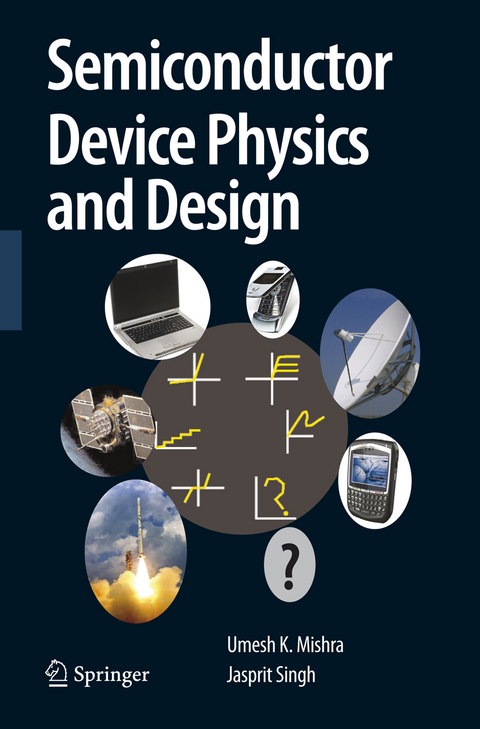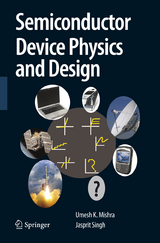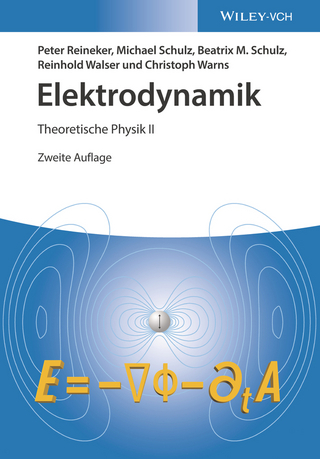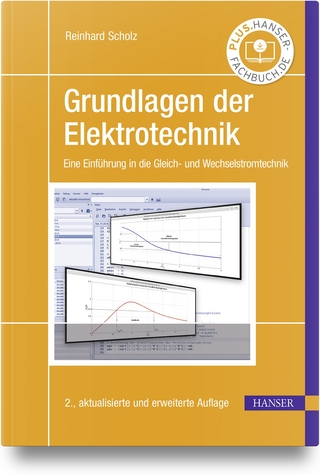Semiconductor Device Physics and Design
Springer-Verlag New York Inc.
978-1-4020-6480-7 (ISBN)
This book is comprehensive without being overwhelming.
Semiconductor Device Physics and Design provides a fresh and unique teaching tool. Over the last decade device performances are driven by new materials, scaling, heterostructures and new device concepts. Semiconductor devices have mostly relied on Si but increasingly GaAs, InGaAs and heterostructures made from Si/SiGe, GaAs/AlGaAs etc have become important. Over the last few years one of the most exciting new entries has been the nitride based heterostructures. New physics based on polar charges and polar interfaces has become important as a result of the nitrides. Nitride based devices are now used for high power applications and in lighting and display applications. For students to be able to participate in this exciting arena, a lot of physics, device concepts, heterostructure concepts and materials properties need to be understood. It is important to have a textbook that teaches students and practicing engineers about all these areas in a coherent manner.
Semiconductor Device Physics and Design starts out with basic physics concepts including the physics behind polar heterostructures and strained heterostructures. Important devices ranging from p-n diodes to bipolar and field effect devices is then discussed. An important distinction users will find in this book is the discussion presented on device needs from the perspective of various technologies. For example, how much gain is needed in a transistor, how much power, what kind of device characteristics are needed. Not surprisingly the needs depend upon applications. The needs of an A/D or D/A converter will be different from that of an amplifier in a cell phone. Similarly the diodes used in a laptop will place different requirements on the device engineer than diodes used in a mixer circuit. By relating device design to device performance and then relating device needs to system use the student can see how device design works in real world.
This book is comprehensive without being overwhelming. The focus was to make this a useful text book so that the information contained is cohesive without including all aspects of device physics. The lesson plans demonstrated how this book could be used in a 1 semester or 2 quarter sequence.
Dr. Umesh K. Mishra is Professor at UC Santa Barbara in the Department of Electrical and Computer Engineering. His areas of focus include: Electronics and Photonics: high-speed transistors, semiconductor device physics, quantum electronics, optical control, design and fabrication of millimeter-wave devices, in situation processing and integration techniques. Professor Mishra joined the College's ECE Department in 1990 from the Department of Electrical and Computer Engineering at North Carolina State University. A recognized leader in the area of high-speed field effect transistors, Dr. Mishra has made major contributions at every laboratory and academic institution for which he has worked, including: Hughes Research Laboratories in Malibu, California; the University of Michigan at Ann Arbor; and General Electric, Syracuse, New York. His current research areas attempt to develop an understanding of novel materials and extend them into applications. He is the Director of the AFOSR PRET Center for Non-Stoichiometric Semiconductors and of the ONR MURI Center (IMPACT), which relates to the application of SiC and GaN based transistors for power amplification. In 1989 Dr. Mishra received the Presidential Young Investigator Award from the National Science Foundation. In 1992 he received the Young Scientist of the Year Award from the International Symposium on GaAs and Related Compounds. He was elected as a Fellow of IEEE in 1995. Jasprit Singh joined the University of Michigan, Ann Arbor, in 1985 and he is Professor in the Electrical Engineering and Computer Science department.
Structural Properties of Semiconductors.- Electronic levels in semiconductors.- Charge transport in materials.- Junctions in Semiconductors: P-N Diodes.- Semiconductor Junctions.- Bipolar Junction Transistors.- Temporal Response Of Diodes and Bipolar Transistors.- Field Effect Transistors.- Field Effect Transistors: MOSFET.- Coherent Transport and Mesoscopic Devices.
| Erscheint lt. Verlag | 28.11.2007 |
|---|---|
| Reihe/Serie | Integrated Circuits and Systems |
| Zusatzinfo | XXIV, 559 p. |
| Verlagsort | New York, NY |
| Sprache | englisch |
| Maße | 155 x 235 mm |
| Themenwelt | Naturwissenschaften ► Physik / Astronomie ► Elektrodynamik |
| Technik ► Elektrotechnik / Energietechnik | |
| ISBN-10 | 1-4020-6480-2 / 1402064802 |
| ISBN-13 | 978-1-4020-6480-7 / 9781402064807 |
| Zustand | Neuware |
| Haben Sie eine Frage zum Produkt? |
aus dem Bereich




